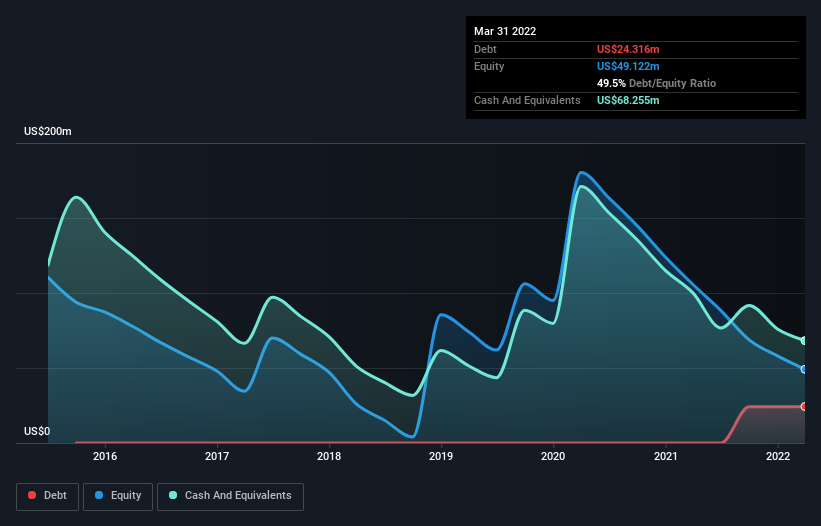Is Alaunos Therapeutics (NASDAQ:TCRT) Using Debt In A Risky Way?
David Iben put it well when he said, 'Volatility is not a risk we care about. What we care about is avoiding the permanent loss of capital.' So it might be obvious that you need to consider debt, when you think about how risky any given stock is, because too much debt can sink a company. We note that Alaunos Therapeutics, Inc. (NASDAQ:TCRT) does have debt on its balance sheet. But the more important question is: how much risk is that debt creating?
Why Does Debt Bring Risk?
Debt and other liabilities become risky for a business when it cannot easily fulfill those obligations, either with free cash flow or by raising capital at an attractive price. Part and parcel of capitalism is the process of 'creative destruction' where failed businesses are mercilessly liquidated by their bankers. However, a more usual (but still expensive) situation is where a company must dilute shareholders at a cheap share price simply to get debt under control. Of course, the upside of debt is that it often represents cheap capital, especially when it replaces dilution in a company with the ability to reinvest at high rates of return. The first thing to do when considering how much debt a business uses is to look at its cash and debt together.
View our latest analysis for Alaunos Therapeutics
What Is Alaunos Therapeutics's Debt?
You can click the graphic below for the historical numbers, but it shows that as of March 2022 Alaunos Therapeutics had US$24.3m of debt, an increase on none, over one year. But it also has US$68.3m in cash to offset that, meaning it has US$43.9m net cash.
How Healthy Is Alaunos Therapeutics' Balance Sheet?
The latest balance sheet data shows that Alaunos Therapeutics had liabilities of US$21.2m due within a year, and liabilities of US$14.6m falling due after that. Offsetting these obligations, it had cash of US$68.3m as well as receivables valued at US$1.11m due within 12 months. So it can boast US$33.5m more liquid assets than total liabilities.
This short term liquidity is a sign that Alaunos Therapeutics could probably pay off its debt with ease, as its balance sheet is far from stretched. Simply put, the fact that Alaunos Therapeutics has more cash than debt is arguably a good indication that it can manage its debt safely. The balance sheet is clearly the area to focus on when you are analysing debt. But ultimately the future profitability of the business will decide if Alaunos Therapeutics can strengthen its balance sheet over time. So if you want to see what the professionals think, you might find this free report on analyst profit forecasts to be interesting.
Since Alaunos Therapeutics doesn't have significant operating revenue, shareholders may be hoping it comes up with a great new product, before it runs out of money.
So How Risky Is Alaunos Therapeutics?
By their very nature companies that are losing money are more risky than those with a long history of profitability. And in the last year Alaunos Therapeutics had an earnings before interest and tax (EBIT) loss, truth be told. And over the same period it saw negative free cash outflow of US$57m and booked a US$67m accounting loss. But the saving grace is the US$43.9m on the balance sheet. That means it could keep spending at its current rate for more than two years. Even though its balance sheet seems sufficiently liquid, debt always makes us a little nervous if a company doesn't produce free cash flow regularly. The balance sheet is clearly the area to focus on when you are analysing debt. However, not all investment risk resides within the balance sheet - far from it. Case in point: We've spotted 5 warning signs for Alaunos Therapeutics you should be aware of, and 3 of them are a bit unpleasant.
If, after all that, you're more interested in a fast growing company with a rock-solid balance sheet, then check out our list of net cash growth stocks without delay.
Have feedback on this article? Concerned about the content? Get in touch with us directly. Alternatively, email editorial-team (at) simplywallst.com.
This article by Simply Wall St is general in nature. We provide commentary based on historical data and analyst forecasts only using an unbiased methodology and our articles are not intended to be financial advice. It does not constitute a recommendation to buy or sell any stock, and does not take account of your objectives, or your financial situation. We aim to bring you long-term focused analysis driven by fundamental data. Note that our analysis may not factor in the latest price-sensitive company announcements or qualitative material. Simply Wall St has no position in any stocks mentioned.

